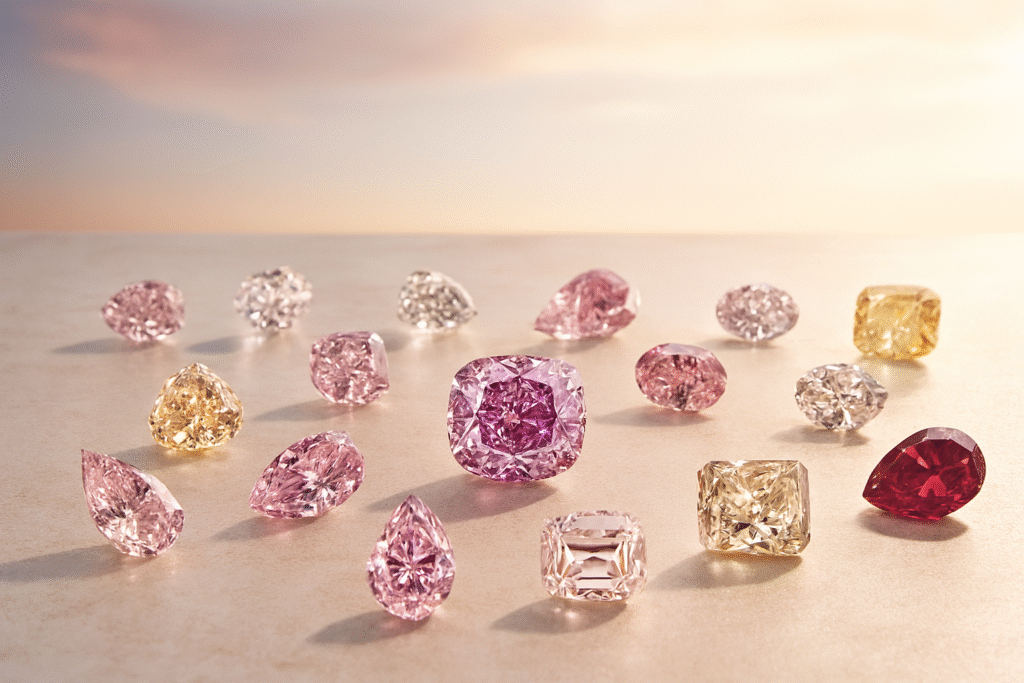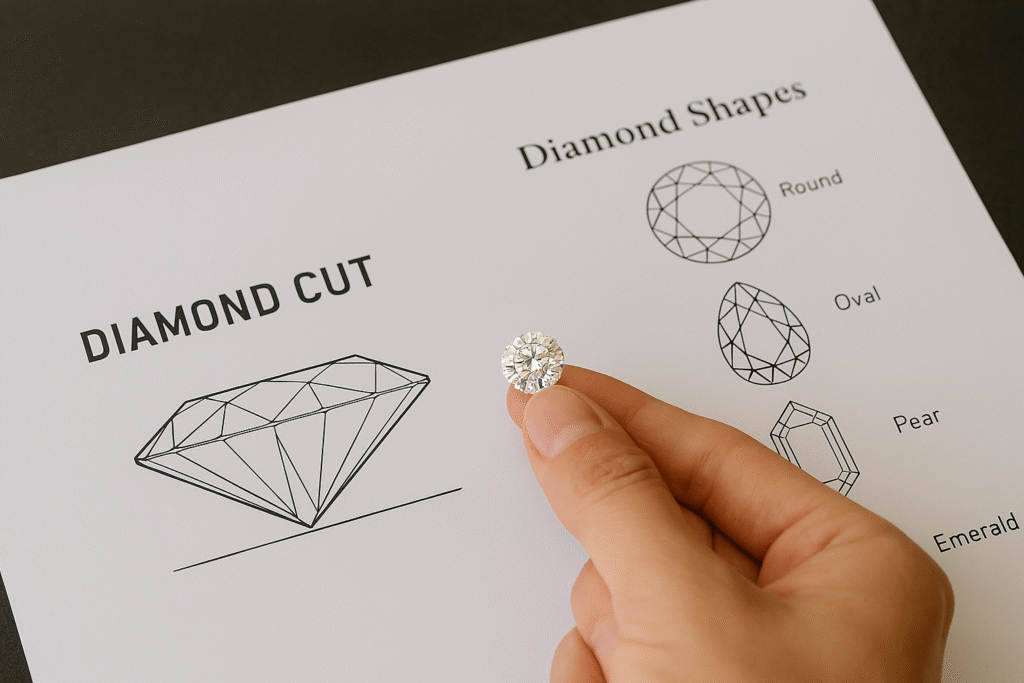The Final Beyond Rare Tender by Rio Tinto marks a historic moment in diamond history. Titled Into the Light, this last Art Series includes 52 lots of rare diamonds from the Argyle Mine in Australia and the Diavik Mine in Canada.
Why the Final Beyond Rare Tender Matters
The Argyle mine closed in 2020, ending production of its famous pinks and reds. The Diavik mine will end in 2026, making this Final Beyond Rare Tender one of the last opportunities to acquire such stones. Collectors, investors, and jewelers see these diamonds as both cultural treasures and financial assets.
- Six curated Masterpieces represent the best of Argyle and Diavik.
- 39 single diamonds and 7 sets complete the tender.
Patrick Coppens of Rio Tinto said:
“It is hard to overstate the importance of this final collection from two extraordinarily beautiful places on earth.”
For background, read about the history of Argyle mining or explore practical diamond buying tips for collectors
Highlights of the Collection
- Argyle diamonds: 1 Fancy Red, 12 Fancy Violet, 76 Fancy Pink/Purple-Pink.
- Diavik diamonds: 2 Flawless D-Colour whites (5.11 ct Emerald, 3.02 ct Pear), plus a 6.12 ct Fancy Vivid Yellow.
Learn more about the science behind the guide to understanding diamond color. For market insights, see market insights on colored diamonds.
FAQ on the Final Beyond Rare Tender
Q: Why are Argyle pink diamonds so valuable?
A: Less than 0.1% of Argyle production were pinks, and demand has surged by over 500% in 20 years.
Q: When do bids close?
A: October 20, 2025, after exhibitions in Hong Kong, Australia, and Antwerp.
Q: What makes Diavik diamonds unique?
A: They are prized for clarity, with flawless whites like the 5.11 ct Emerald cut included in this tender.
The Future of Collectible Diamonds
With Argyle closed and Diavik nearing its end, the Final Beyond Rare Tender is not just a sale—it is a milestone in diamond history. Many collectors believe these diamonds will become symbols of rarity, investment, and legacy for generations.
This comprehensive global cuisine FAQ covers everything about Asian and Western food and drinks. Whether you’re exploring international cooking techniques or discovering new flavors, this global cuisine FAQ answers the most frequently asked questions about world food traditions, ingredients, and culinary practices from both Eastern and Western cultures.
Global Cuisine FAQ: Asian & Western Food & Drinks
Food reveals cultural contrasts in clear and delicious ways. From cooking methods to dining customs, Asian and Western cuisines showcase unique traditions while also offering fascinating overlaps. Below, you’ll find answers to the most common questions about these culinary worlds.
Understanding Core Differences in Cuisine
1. What distinguishes Asian and Western culinary traditions?
Asian meals often rely on rice or noodles as a foundation. Flavors usually come from soy sauce, ginger, garlic, and a wide variety of spices. Meanwhile, Western gastronomy emphasizes bread, potatoes, and pasta. Dairy plays a key role, with butter, cream, and cheese giving richness to many dishes. Herbs such as rosemary and thyme highlight European cooking. These contrasts create distinct dining habits and flavor profiles.
2. Are Asian dishes always spicy?
No, not at all. While cuisines from Thailand and parts of India feature bold use of chilies, not every dish follows this pattern. Japanese sushi, Chinese dim sum, and Korean bulgogi are mild examples. In fact, Asian cuisines range from fiery to delicate, showcasing a rich palette of flavor.
Western Breakfast Staples and Comfort Foods
1. What constitutes typical Western morning meals?
Western breakfasts often include eggs, bacon, and toast. Pancakes, waffles, and cereal are also popular choices. These hearty starts are usually enjoyed with coffee, tea, or juice, providing both energy and comfort.
2. What represents popular Western comfort foods?
Comfort foods in the West speak to nostalgia and indulgence. Creamy macaroni and cheese, pizza, and hearty casseroles are favorites. Similarly, burgers and fried chicken have wide appeal. Because they are warm, filling, and familiar, these dishes strongly connect to emotion.
Cultural Dining Practices
1. Do all Asian cultures employ chopsticks?
No. Chopsticks dominate in East Asia—China, Japan, and Korea. However, Southeast Asia prefers spoons and forks, while India and parts of the Middle East often use flatbreads or hands. This diversity highlights how food customs closely reflect culture.
2. Why are some Asian foods fermented?
Fermentation preserves food while also enhancing nutrition and flavor. Korean kimchi, Japanese miso, and Indonesian tempeh show how tradition meets health benefits. These foods are valued not only for taste but also for their role in well-being.
Common Western Beverages
1. What beverages are common with Western meals?
Western dining often features water, soda, or fresh juice. Alcohol also has a strong cultural connection, with wine served at European dinners and beer central in North America. In the southern United States, sweet iced tea is a staple.
Dietary Flexibility and Options
1. Can one discover plant-based options easily?
Yes. Asian cuisines offer tofu stir-fries, lentil dals, and vegetable curries that are naturally vegetarian. Western food, similarly, embraces plant-based eating. Salads, vegetarian pastas, and vegan burgers have grown popular, making meat-free dining accessible worldwide.
Unique Asian Drinks to Explore
1. What are some unique Asian beverages?
Asia provides a wide variety of distinctive drinks. Bubble tea, from Taiwan, combines tea with chewy tapioca pearls. Japanese sake, made from rice, holds deep cultural meaning. Strong Vietnamese iced coffee, sweetened with condensed milk, adds a bold twist compared to Western brews.
Portion Sizes and Dining Habits
1. How do portion sizes compare?
Western meals often emphasize large servings, reflecting abundance. By contrast, Asian meals are usually smaller yet balanced, encouraging sharing and mindful eating. This creates different social experiences around the table.
The Art of Fusion Cuisine
1. Is it feasible to integrate Asian and Western flavors?
Absolutely. Fusion cuisine blends traditions in creative ways. For instance, teriyaki burgers combine Japanese flavors with American fast food, while kimchi tacos bring Korean spice to Mexican street food. These playful mixes show how food bridges cultures.



